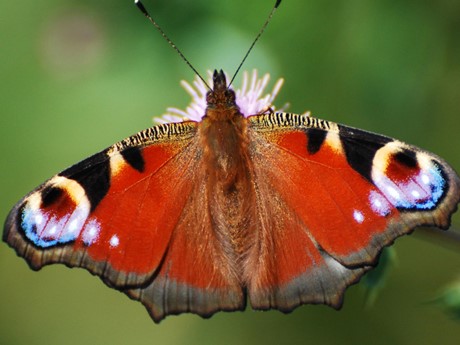2023 State of the UK Climate Report
Judith Garforth, 25/07/2024
The 2023 State of the UK Climate report has just been published. This report provides an up-to-date assessment of the UK climate and includes Nature's Calendar records as an indicator of nature's response to weather and climate. The phenology section (section 10, page 94) is a summary of the Nature's Calendar records from 2023 compared to previous years.
The 2023 report is published as a special issue of the International Journal of Climatology, which is the Royal Meteorological Society journal of climate science.

What is phenology?
Phenology is the study of the timing of recurring biological 'events', often in relation to weather and climate. These 'events' are part of the annual life cycles of plants and animals and include:
- leafing of trees
- flowering of plants
- emergence of insects
- migration of birds
- evidence of breeding
Phenology is important, because it provides an indicator of nature's response to weather (in the short-term) and climate (over the longer-term).
Impact of weather on wildlife in 2023
There are many different species and seasonal events that are recorded for the Nature's Calendar project. This report is a summary and looks at:
- four trees
- four flowers
- four invertebrates
- four vertebrates
The 2023 UK average date for each of these seasonal events was compared to a 'baseline' average.
We used the baseline 1999-2022 which incorporates all of the data since the start of the Nature's Calendar project, including its pilot year in 1999. We'd like to use a 30-year average, as is used in the rest of the report, and is the World Meteorological Organization climatological best practice, but the project isn't quite old enough yet. We're getting there!

Oak first leaf 2023

Wood anemone first flowering 2023

Brimstone butterfly first seen 2023

Frogspawn first seen 2023
Key findings
Most events were generally near-baseline in 2023 with a few exceptions.
- Insect activity was generally later than baseline. Although there were record breaking temperatures in 2023 (particularly in June), March and April, the months important for the emergence of insects in the spring, had temperatures near average. March was also a very wet month meaning fewer insects on the wing.
- Hazel had its earliest flowering date in the series from 1999. Hazel flowers early in the year and is influenced by winter temperatures in December-February. February temperatures were well above average in 2023.
- Hazel flowering is starting to show an advance over the 1999-2023 period. We'll be keeping an eye on this over the coming years. What implications will this have for those with pollen allergies, and for the ripening of hazelnuts later in the year and for the wildlife like dormice that feed on them? Will they all stay in sync?
Overall, the leaf-on season (the time from first leaf in spring to bare tree in autumn) was four days longer than the baseline, largely due to a mild and therefore later autumn, rather than an earlier spring.

Hazel flowering

Hazelnuts ripening
Thank you
If you already take part in the project then don't miss the acknowledgements on page 97 of the report which say:
"Nature's Calendar thanks all its volunteer recorders, without whom it could not function, and support from the Players of People's Postcode Lottery. "
Without all the observations submitted to the Nature's Calendar project, by volunteers monitoring wildlife in their local area, we wouldn't be able to provide this evidence of how weather and climate are impacting nature. There is no equivalent professional network of phenology recorders in the UK. Thank you.
We need more volunteers to take part!
If you've been inspired to get involved and would like to contribute observations which may feature in future climate reports, register to take part! We always welcome new volunteers to the project.
Read our quick guide to get started straight away, or join us for an interactive webinar to gain the skills and confidence needed to identify the tree species included in the Nature's Calendar project.
Summer is the perfect time to identify some trees to monitor throughout the autumn. By simply keeping an eye on an oak tree over the coming months and letting us know the date that it's branches become bare you'll be adding to the data for 2024. What better way to enjoy the autumn colours?

Oak first autumn tinting

Oak full autumn tinting

Oak first leaves falling

Oak bare tree
